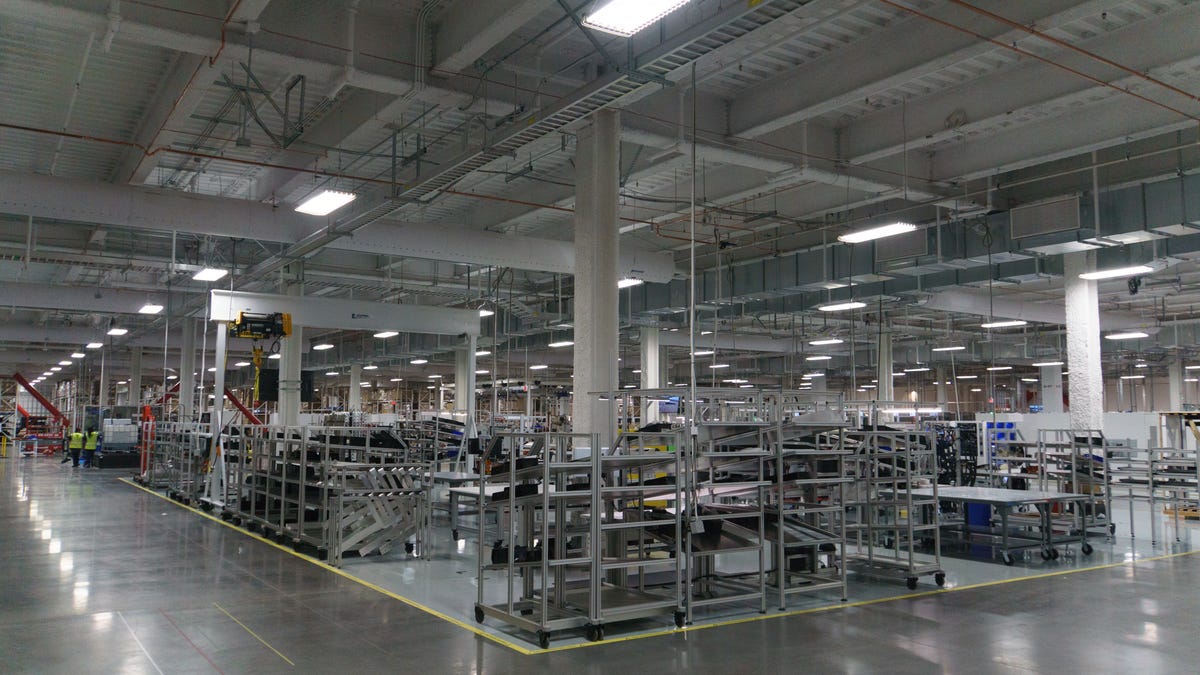Inside the Gigafactory, Tesla's $5 billion bet
The Gigafactory is a mammoth joint effort between Tesla and Panasonic, soon to become the single biggest producer of batteries in the world. Join us for an early look inside.

In many ways, the Model 3 has already been a fantastic success. With nearly 400,000 preorders, Tesla's more affordable follow-up to the Model S and Model X has obviously captured the hearts and minds (and wallets) of an awful lot of people. However, it also poses a lot of problems for a company that only sold about 50,000 cars last year, most of them stickered at more than twice the starting price of the
. To be successful, Tesla needs to increase its production in a huge way, all while decreasing its costs significantly.And that's where the Gigafactory comes in. A joint effort between Tesla and Panasonic, the Gigafactory is a $5 billion project that will create the world's premier battery manufacturing facility. The Gigafactory will not only be physically larger than any other cell-packing plant on the planet, it'll produce more batteries than the entire industry did back in 2013.
That's a lot of batteries, enough to meet Tesla's 500,000-per-year manufacturing goals -- and potentially even more.
It's only a model.
When completed, the factory will cover five million square feet of the desert floor just outside of Reno, Nevada. Right now, the uncompleted but already-operational factory sits on 800,000 square feet. Over the next four years the building will grow and grow again, swelling to its full size while production dials up simultaneously. The roof will be covered in solar panels, with the goal of producing enough electricity to power the entire thing.
Tesla is already assembling Powerwall units here, but the first Model 3 battery packs are expected to roll off the line by the middle of next year. From there, Tesla will have to scale quickly to meet the company's Model 3 production goals for 2018.
And, once the company does, the cost savings will begin. Producing at that kind of scale, under a controlled facility, should drastically reduce the cost of the battery packs. "We're optimistic that it's greater than 30 percent," Musk said at the Gigafactory grand opening.
Tesla CEO Elon Musk and CTO JB Straubel.
The battery pack is far and away the most expensive component in a modern EV, and so significant cost savings there helps the bottom line in a big, big way.
While Tesla will own the facility, the project is a joint effort with Panasonic, who will effectively lease out a large portion of the facility for the production of individual battery cells, each slightly smaller than a D-cell battery. Tesla will then receive those completed cells and assemble them into flat battery packs. Completed packs will be shipped via train to Tesla's Fremont factory, about 250 miles away. There, they'll be hoisted into the chassis of the Model 3 and, presumably, into future Tesla models, like the expected Roadster reboot.
In time, Musk believes the Gigafactory will employ close to 10,000 people, a huge boon for the local economy and for the might of American manufacturing in general. It's also a huge bet -- some might even say a gamble. All the more reason to build it in the Nevada desert.

